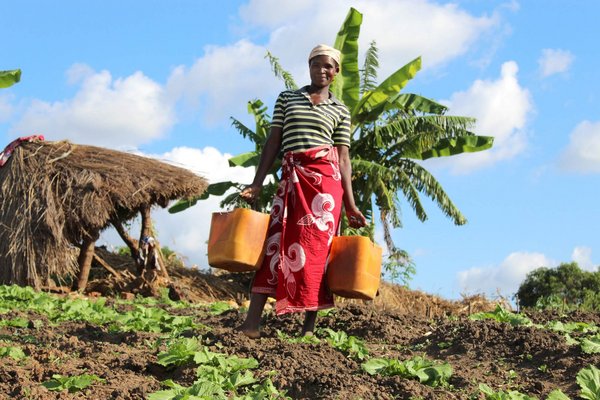- Share this article
- Subscribe to our newsletter
Growing hunger crisis in Southern Africa
A record 45 million people across the 16-nation Southern African Development Community (SADC) will be severely food insecure in the next six months, United Nations food agencies warned in late October 2019. The region has faced the worst drought in 35 years in central and western areas during the growing season, according to Margaret Malu, WFP's acting Regional Director for Southern Africa.
The Food and Agriculture Organization (FAO), the International Fund for Agricultural Development (IFAD) and the World Food Programme (WFP) are calling for urgent funding to avert a major hunger crisis and for the international community to step up investment in long-term measures to combat the impact of climate shocks and build the capacity of communities and countries to withstand them.
There are more than 11 million people now experiencing "crisis" or "emergency" levels of food insecurity in nine Southern African countries: Angola, Zimbabwe, Mozambique, Zambia, Madagascar, Malawi, Namibia, Eswatini and Lesotho.
Scaling up agricultural emergency response
While southern Africa has experienced normal rainfall in just one of the last five growing seasons, persistent drought, back-to-back cyclones and flooding have wreaked havoc on harvests in a region overly dependent on rain-fed, smallholder agriculture.
The growing hunger crisis, affecting urban as well as rural communities, is being aggravated by rising food prices, large-scale livestock losses and mounting joblessness. It is also worsening levels of acute malnutrition in particularly at-risk communities.
The UN food agencies are escalating their responses across the nine countries, planning to assist more than 11 million people by mid-2020. In addition to addressing urgent food and nutrition needs, they will help smallholder farmers boost production and reduce losses, manage precious soil and water resources in a sustainable way and embrace climate-smart agricultural practices, better access to inputs, credit and markets, and spearhead vaccination campaigns to contain livestock disease. It is time to scale up agricultural emergency response, according to Alain Onibon, FAO's Sub-Regional Coordinator for Southern Africa.
Southern Africa's temperatures are rising at twice the global average according to the International Panel on Climate Change, and the region includes six of the nine African countries set to be hardest hit by adverse weather in coming years: DR Congo, Malawi, Mozambique, Tanzania, Zambia and Zimbabwe.
(FAO/ile)
More information:
FAO Website: http://www.fao.org/news/story/en/item/1242784/icode/
IPC – Integrated Food Security Phase Certification: http://www.ipcinfo.org/ipc-country-analysis/results/en/?imagealttext=77106





Add a comment
Be the First to Comment